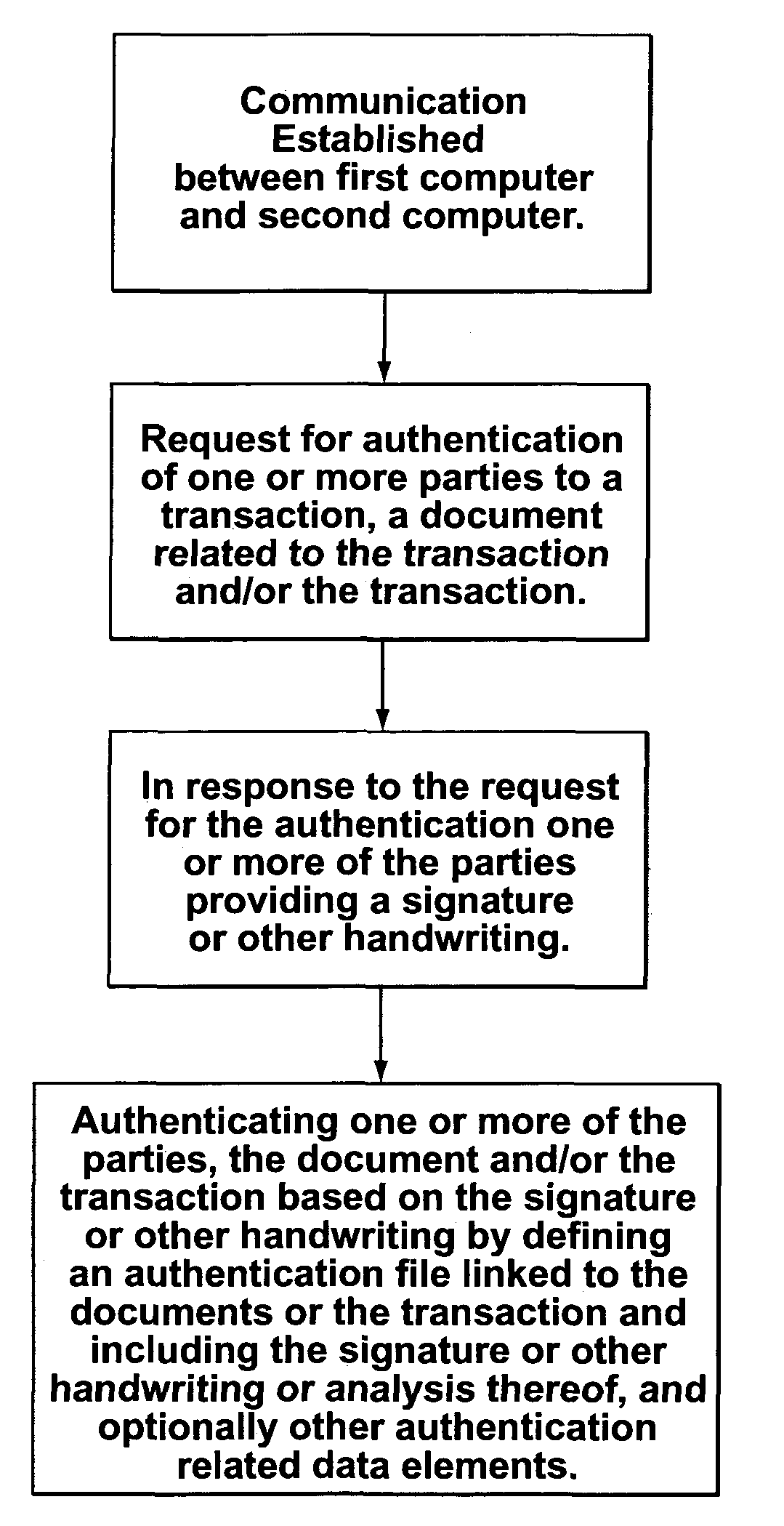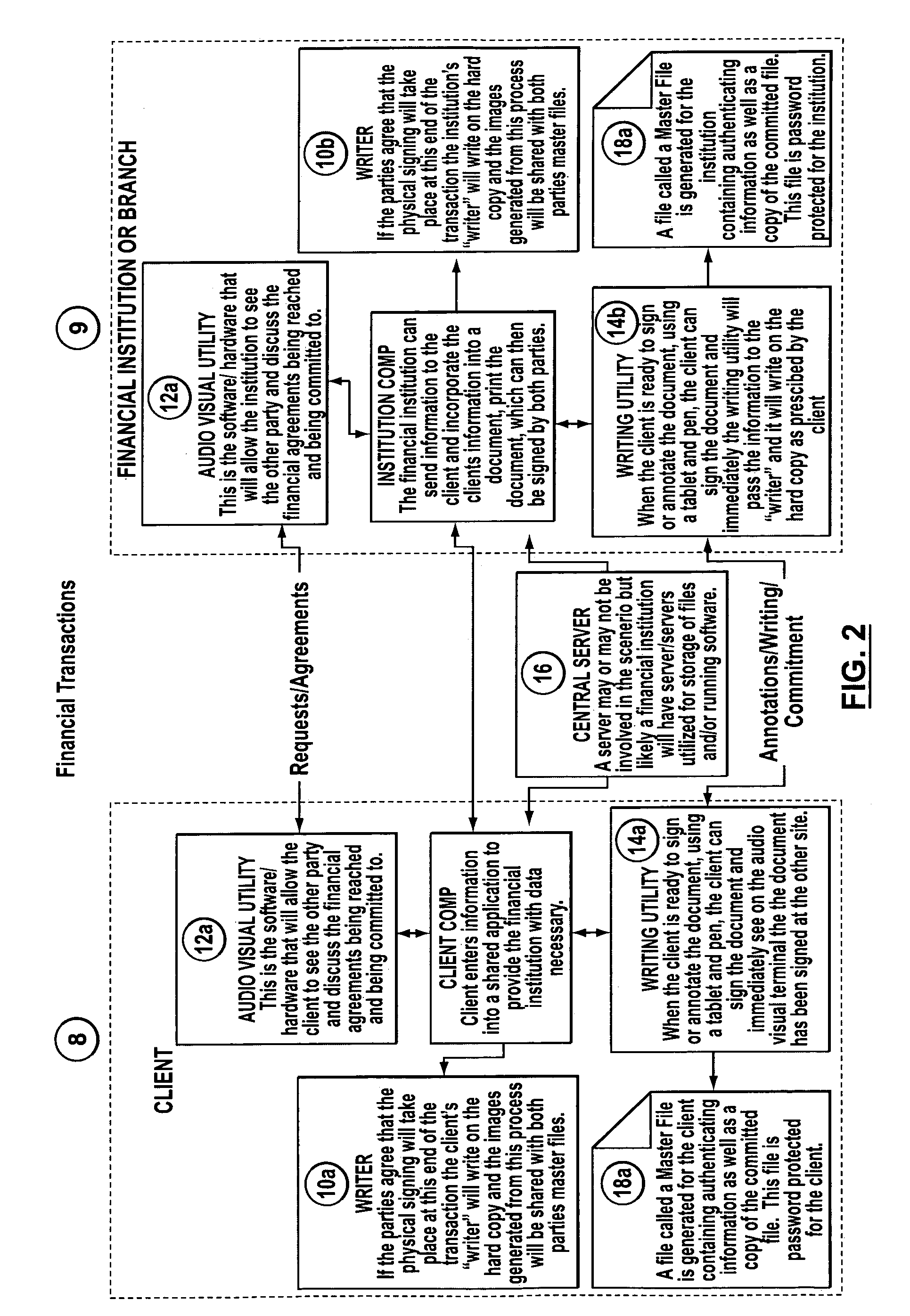However, investment agents / dealers and brokers specialize in securities and do not offer most banking services.
The increasing worldwide integration of markets for goods, services, labour and capital makes it impossible to quantify the world markets that financial institutions operate in.
It is difficult to identify how many banks and
bank branch offices there are throughout the world because many countries have banks that operate only locally, but it is safe to say that the number is in the tens of thousands.
The offering is not as broad as that of the banks and the customer base is limited to membership in the credit union.
These companies are therefore limited in how much
automation they can incorporate.
Because of this, money
transmitter offices are quite large in numbers.
This makes it more difficult to use ATM's or other forms of
automation.
However, there are security issues associated with the handling of cash that would likely benefit from remote signing and interaction.
(1) Retail: Retail firms include full-service firms and discount brokers. Full-service firms offer a wide variety of products and services for the retail (individual) investor including: research and advice; buying and selling and; monitoring and reporting. Discount brokers execute trades over the telephone and over
the Internet for clients at reduced rates, but generally do not provide advice. They are popular with more knowledgeable clients who are willing to research companies themselves in exchange for lower commissions.
(2) Institutional: These firms specialize in serving institutional clients such as pension funds, insurance companies and other investment firms.
(3) Integrated: These firms offer products and services that cover all aspects of the industry, including full participation in both the institutional and retail markets. These are typically very large firms and they provide investment advice as well as trading and management services. Some of the largest of these firms are owned by, or affiliated with, major banking institutions.
When one considers the thousands of individual financial institutions around the world, and the millions of customers, the number of financial transactions being executed becomes mind boggling.
Processes based on PIN's, however, have been susceptible to various forms of security attacks.
In the U.S., the Real ID Act (passed in 2005) makes it more difficult for illegal immigrants to obtain identification that the federal government would recognize when they try to board a plane, fill out tax forms or open a
bank account.
In addition to a potential authentication deficiency, most of today's more automated transactions suffer from a lack of direct interaction between supplier and
client and can be very impersonal experiences.
We have all experienced
frustration at not being able to “talk to a real person” when we encounter problems filling out an on-line form or at the ATM.
Electronic signing technologies involving
Public Key Infrastructure, for example, are cumbersome as it is quite likely that at least one of the signatories has not signed up or does not have access to their key store at the
time signature is required.
Either of these solutions is
time consuming, relatively resource intensive.
The closing meeting in particular carries significant cost when one considers
travel time, travel expenses, as well as the loss in efficiency of the signing representatives who are not normally and their normal output levels even if they are not directly engaged by the transaction negotiations or the closing meeting, because of the distractions involved in the
group setting for example.
One of the major impediments preventing the
automation of many transactions is the need for a legally valid signature.
Even if faxed signatures were to become acceptable in all cases, they have a major drawback in that the signature could be a forgery.
Accordingly, in many cases signature using fax counterparts does not provide a desirable level authentication.
In addition, while faxes may solve the signature requirement, they do not help enhance the customer service interaction.
The use of electronic signatures offers speed advantages over faxing, however, this method can still allow forgeries and does not resolve the customer
interaction problem.
Also, there are problems with the adoption of systems based on digital signatures because they generally require a relatively significant departure from established practices for engaging in financial transactions.
While this method is relatively speedy and appears effective, it still has authentication problems.
There is no foolproof way of ensuring the signed document faxed or e-mailed is the same one you saw during the video conference.
An issue related to authentication is non-repudiation.
Currently,
handwriting is generally used for the purposes of non-repudiation (or in some cases a handwritten initial or hand, but the problems concerning authentication identified above also affect non-repudiation.
This is, however, a costly solution for the institution.
It also tends to be somewhat impersonal and does not resolve a signature or
handwriting issue that may be present.
Video conferencing can, of course, be costly and it does not provide a fully-integrated solution to the twin challenges of signature requirement and enhanced interaction.
The two major drawbacks of webcams are that the quality of the images can be unreliable and the lack of security.
In addition, webcams do not provide an integrated solution for the signature requirement.
Needless to say, this solution would be prohibitively expensive for the institutions.
 Login to View More
Login to View More  Login to View More
Login to View More 


